Pickling and jamming
So far this year I have made 18 pints of pickles, that is about 9 liters. And I also made half-sour pickles that are whole cucumbers fermented in salt-water for a week and then eaten directly, and they turned out to be really good! I don't think they will last long in the fridge. (Click on photos for larger images, all on my Flickr account.)

For the first time in my life have I canned the American way, which means that you have special glass jars and lids that are processed in either boiling water or steam to sterilize the content after the jars have been filled. The jars are called Mason or Ball jars, and are really easy to use. These jars were invented in the mid 1800's, and I think it is amazing I never saw them in Sweden. So smart design! After sterilization you can store the canned food at room temperature (but lower temp is better).
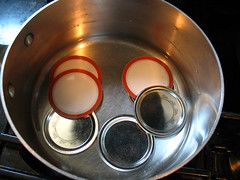
The lids have a rubber area on the inside of them (orange), so you heat the lids (simmering, no boiling), and then put them on the top of the jars with screwtop metal band to hold them not too tight in place. During the sterilization, extra air will come out through the lids and after the boiling, when the contents cool the jar will be sealed along the rubber edge and under negative pressure. You replace the lids each year, but can reuse the glass jars and the metal bands that hold the lids in place during sterilization. If you find a jar that doesn't have a properly sealed lid you shouldn't eat the content, they might have spoiled and be contaminated with bacteria. So you want to hear the 'pop' when you open a new jar.
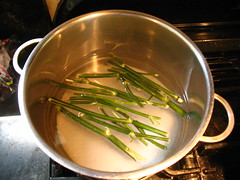
Making the syrupy brine to pour over pickles - water, vinegar, sugar, salt, and some dill stems for flavor.
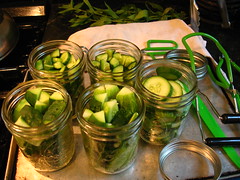
Cleaned jars are filled with homegrown cucumbers and waiting to be filled with hot brine.
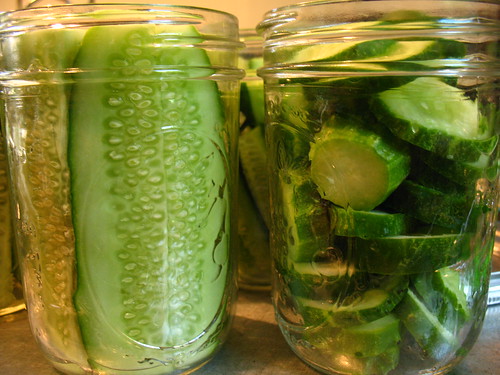
Pickles can be either long spears or slices. PP prefers spears, I love slices, so I made both.
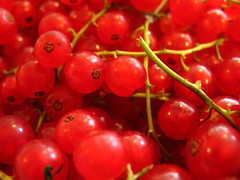
For the first time we got a real harvest of red currants this year, and they were delicious. I made red currant jelly (röda vinbärsgele) of most of it. My grandmothers used to serve red currant jelly with Sunday beef roasts.
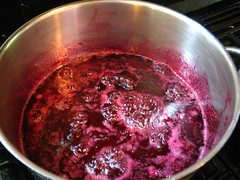
Red currant jelly is made from red currant juice. You boil the fruit and then strain it to get the juice without the skin and seeds. Then you boil the juice and add sugar so it gets a jelly like texture when it is cold - this step took much longer than I expected. This picture shows the jelly at a full roaring boil.
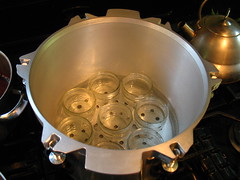
At the same time, the jars were sterilized in boiling water. I used our pressure canner for this and for the boiling-water sterilization of the filled jars, but without the heavy steel lid.

Filled small jars (1/4 pint, ca 1 dl) with red currant jelly, ready to be sealed with lids and metal bands.
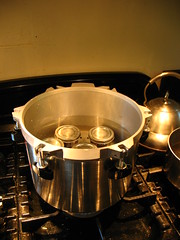
The closed red currant jelly jars are put into the water bath to be boiled for 10 min.
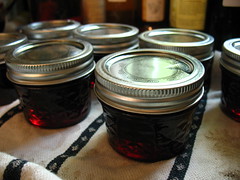
Red currant jelly - finished! Heaven in a jar.
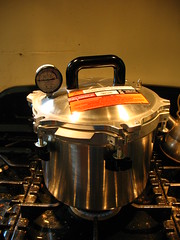




No comments:
Post a Comment